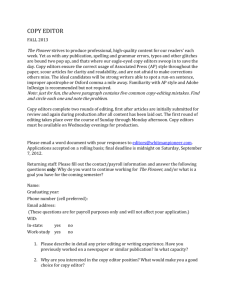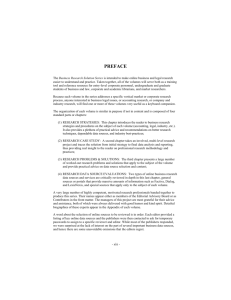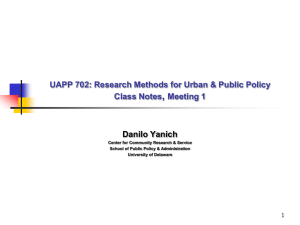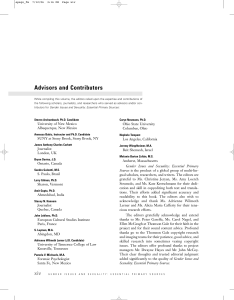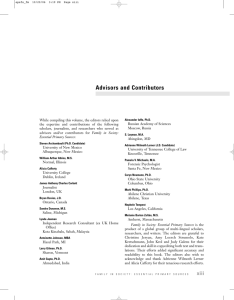The University of Georgia College of Agricultural and Environmental Sciences
advertisement
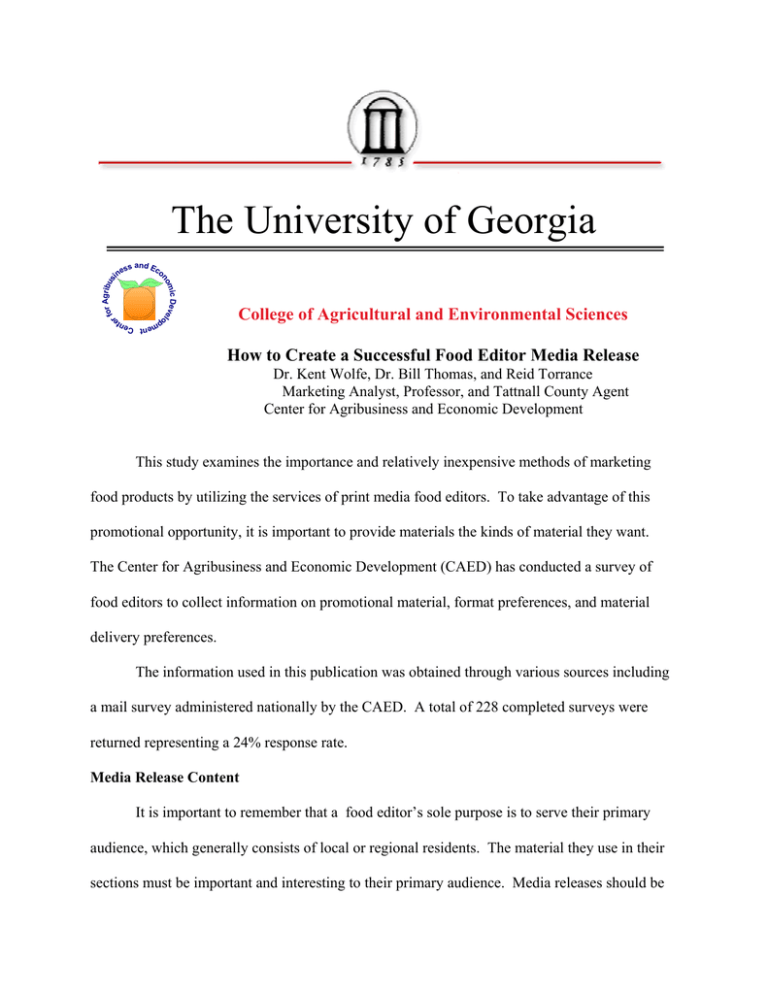
The University of Georgia or Agribus rf i mic Develo no ss and Eco ne College of Agricultural and Environmental Sciences ent Cent e pm How to Create a Successful Food Editor Media Release Dr. Kent Wolfe, Dr. Bill Thomas, and Reid Torrance Marketing Analyst, Professor, and Tattnall County Agent Center for Agribusiness and Economic Development This study examines the importance and relatively inexpensive methods of marketing food products by utilizing the services of print media food editors. To take advantage of this promotional opportunity, it is important to provide materials the kinds of material they want. The Center for Agribusiness and Economic Development (CAED) has conducted a survey of food editors to collect information on promotional material, format preferences, and material delivery preferences. The information used in this publication was obtained through various sources including a mail survey administered nationally by the CAED. A total of 228 completed surveys were returned representing a 24% response rate. Media Release Content It is important to remember that a food editor’s sole purpose is to serve their primary audience, which generally consists of local or regional residents. The material they use in their sections must be important and interesting to their primary audience. Media releases should be 2 produced so as to reflect local and regional tastes and preferences as well as ethnic and cultural differences. A media release should be written to avoid the impression of thinly disguised advertising. Food editors are not in the business of promoting products but of providing information and ideas to their readers. According to food editors, a media release should highlight trends in cooking or consumption preferences, new or exotic recipes as well as interesting developments pertaining to a food as opposed to promoting a brand or advertising specific products. If a recipe is included, it is very important to make sure it has been tested and that all measurements are accurate. Again, it is important to emphasis that a food editor’s primary function is to provide information and new food uses. Therefore, all media release material must be written in a manner that conforms to the food editor=s needs. Basic Guidelines for Creating a Media Release Keep the material short and concise. Newspaper space is valuable and wordiness wastes this asset. Food editors are busy and may be unlikely to rewrite a media release to make it less wordy so that it conforms to their space requirements. Use words that are familiar to the general public and write clearly. The release should be direct, using simple sentences and avoid using superfluous words, jargon and abstractions. However, the release needs to be written as a narrative. Formatting Guidelines for Medial Release Material Generally speaking, it is impractical to expect editors to reformat a release. Therefore, it is essential to provide all materials in a format that makes using and incorporating the release material as easy and effortless as possible. For example, a document created in WordPerfect 3 may experience formatting problems if it is opened in Microsoft Word. This is particularly important if the material includes tables and graphs. To address this and other issues, food editors were asked how materials could be created, formatted and delivered to increase the chances of publication. Word Processing Software Preferences To make the media release user friendly, it is important to determine what software packages the food editors prefer to use. Figure 1 provides insight into food editors’ preferred software packages. WordPerfect appears to be the preferred word processing software, mentioned as the preferred package by 76% of the food editors. An additional 17% prefer Microsoft Word. Based on this information, it is a good idea to create the media release material in both Microsoft Word and WordPerfect to avoid alienating anyone or to avoid potential problems associated with converting the material from one word processing program to another. 4 Paper Versus Electronic When submitting media release material, it is important to submit both a hard copy of the material as well as an electronic copy (disk, CD) to the food editors. More than 40% of the food prefer to receive hard copies of the material. Another one-quarter want the material to be electronically submitted. Interestingly, 30% of the editors would like to receive both an electronic and a hard copy of the press release material. Given these results, it is recommended to submit both electronic and hard copies of all media release material to accommodate the various preferences (figure 2). Receiving Preferences In addition to format issues, it is important to understand the editors’ preferred method of receiving media release material to make using the material as effortless as possible. Figure 3 shows that the food editors prefer to have the information physically delivered as opposed to having it delivered electronically, i.e., email. Web sites provide a relatively new and easy format 5 to distribute information but only 3% of the editors prefer to obtain information through this media. This is not to be interpreted as a preference for hard copy material but a preference for having disks and a hard copy of the material so as no to rely solely on electronic delivery. Picture Preferences When choosing their preferred picture type for inclusion with written releases, food editors named color photographic prints almost as of ten (33.2%) as electronic format (33.5%). Combining these results suggests that roughly 67% of the editors want some type of photograph. The information provided in Figure 4 suggests that a significant percentage of the food editors (29%) prefer to receive slides while only a handful prefer negatives. 6 These results suggest that picture material might be included in multiple formats to ensure ease of use. Given the resources, it appears to be worthwhile to include a color photo print, an electronic copy of the photo as well as slides in media release material. This should be done in order to make the release as easy to use as possible. Tips for Increasing Material Usage According to the food editors, providing visual materials like pictures, art, or slides and including “good/descriptive/easy recipes,” are the most effective ways to increase the odds of getting press release material in columns (Table 1). In addition, the editors indicated that the release material should be well written, provide new and interesting information about the product or its uses, and at the same time short and concise. Since the food editors always look for new material to include in their columns; it is probably wise to revamp the release annually with new recipes, product information, and uses. When possible, try to include an angle that 7 relates to the local population. This can be done by providing material related to a specific region of the country. Table 1. Guidelines for Future Media Release. Guideline Visual Materials Art Photos Slides Visuals/graphics Recipes Information Content New, informative, novel Interesting material News worthy Local Angle Short, concise and complete Timeliness Seasonal/holiday tie-in Provide contact information for follow-up questions Exclude brand name from recipes/don't just promote product Nutritional: (lower case) Information on recipes Provide samples Need it in advance Include sources of information. Other (%) 18% 7% 8% 2% 1% 16% 11% 7% 2% 2% 11% 10% 8% 3% 2% 2% 2% 1% 1% 1% 13% In addition, the food editors indicated it is important to have the material in a timely manner. The issue of “a timely manner” is not really clear, but having the material to the food editors a month in advance of its targeted release date should be sufficient. For example, a release for Memorial Day (at peak harvest) should be delivered to the food editors before the end of April. The inclusion of a material preference response card in the media release package may also provide useful information. The creation of a simple card asking the editor if the material 8 received was in their preferred format could provide direction for future media release material as well as provide insight into the number of editors using the release material. Conclusions By analyzing the results of the food editor survey, it is possible to obtain information to make media releases more effective and user friendly. Media release suggestions: • Continually update the material to keep it “fresh” • Geared the material toward the local population - not too generic • Provide the material in both electronic and hard copy • Provide the material in both WordPerfect and Microsoft Word to ensure compatibility • Provide both hard copies and electronic copies of visual material (photos, art, slides) • Keep providing new and easy to follow recipes

